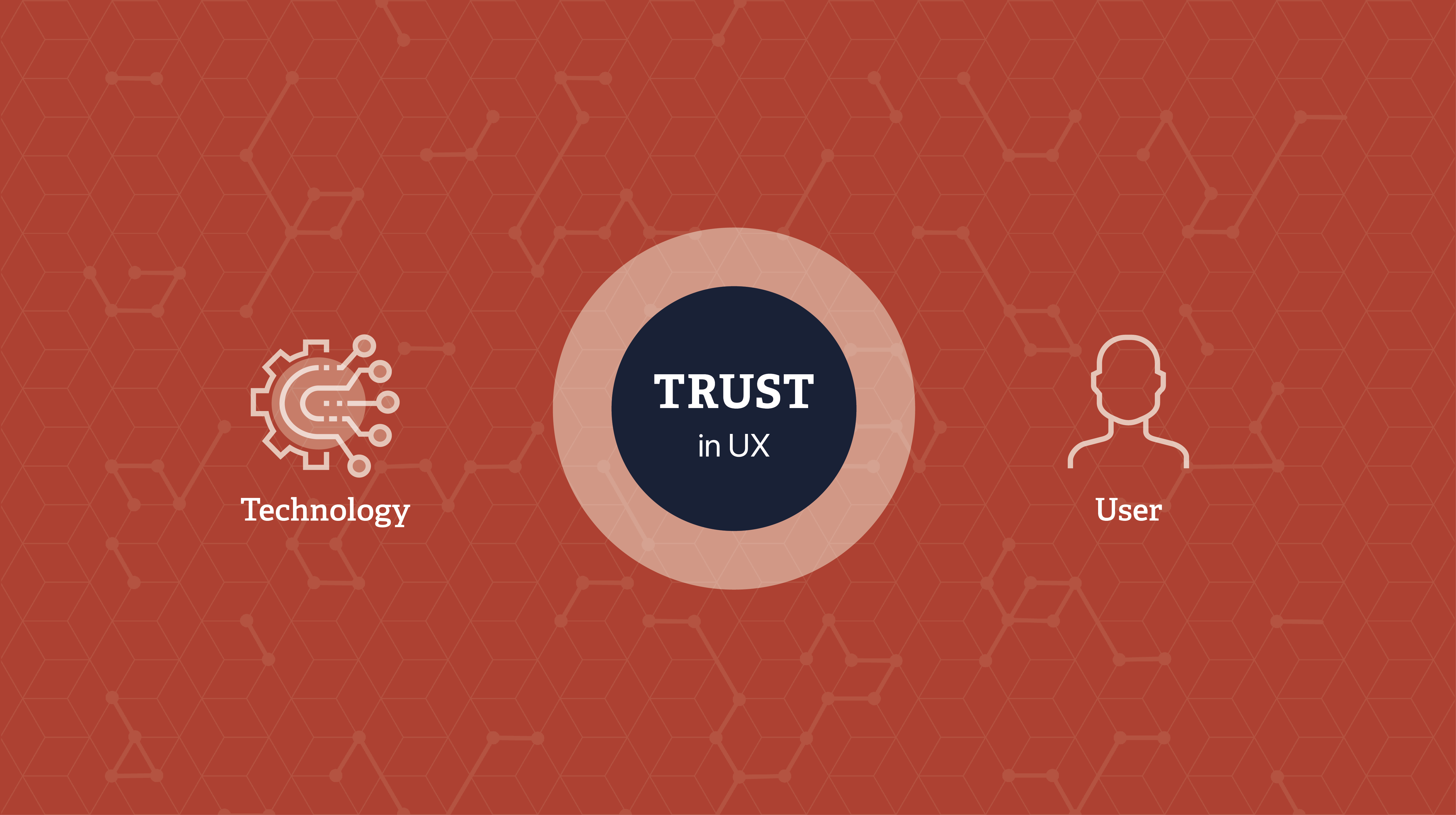
Designing Trust into UX
for Industry 4.0
Overview
During my master thesis, I have investigated the topic of which user experience design will lead users to trust in new technologies without hard evidence for their acceptance previously accumulated over time. I also examined which design will cause them to adopt an open attitude towards said technologies.
Writer Hyun-Ah Kim Supervisors Prof. Benedikt Groß(HfG Schwäbisch Gmünd) / Prof.Dr. Markus Weinberger (Aalen Univ.) Duration 2018 Summer Semester
Users accept Technology via Trust
We, humans, live in an era in which technology determines the shape of our lives. This is an inevitable trend and represents a set future. Technology has surely enriched human life, creating a positive impact upon reaching higher concepts for the purpose of life improvement. Technologies have built on this kind of solid evidence to build trust with users over time.
However, advances in technologies such as artificial intelligence and autonomous driving, which we will undoubtedly face in the near future, will most of the time be implemented far beyond the scope and speed of the past. While these upcoming technologies already promise users a bright future in various shapes at the current point in time, they have also already infiltrated our everyday lives. This leads to previously unknown implications especially in the realm of data law. More often than not we find ourselves asking the basic question: Can this specific technology be trusted?
Smart home devices representing the Internet of Things [IoT] are rapidly being applied to our daily lives. One such example is the ‘Nest Thermometer’: It possesses an auto-away mode to control the temperature of the room according to the presence of the user in his house through sensors.

This Nest product improves a user’s life in a convenient and affordable fashion while being part of a generation of items that will entirely change our relationship to the technology itself. Although it is located in the upper price segment, customers are willing to pay for this attractive feature. On the downside, several online reviews contain information that customers turn off this amazing and innovative auto-away feature and use the device in a normal, manual manner. They did not completely understand the function in terms of when and how to implement it, leading to unexpected results. This cumulated in a reputation of unreliability. User experience is supposed to instil trust into new technologies, not fear of their invasion.
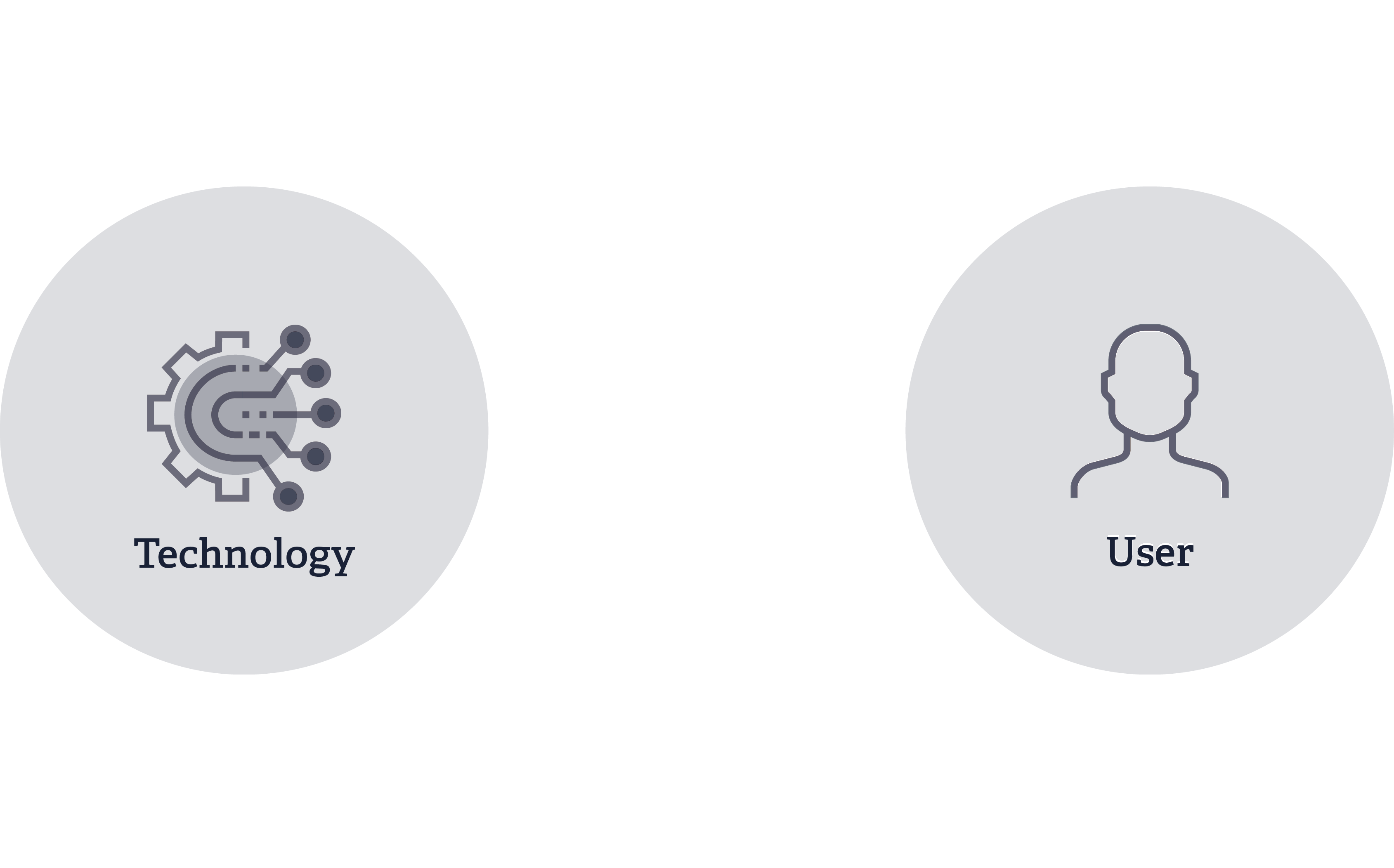
Even though technology provides a massive improvement in terms of cost and usefulness - unless users can trust it, broad range implementation will not take place.
An open attitude of users toward technology will have a significant impact on future social and economic changes. Which kind of user experience will lead people to accept a new technology?
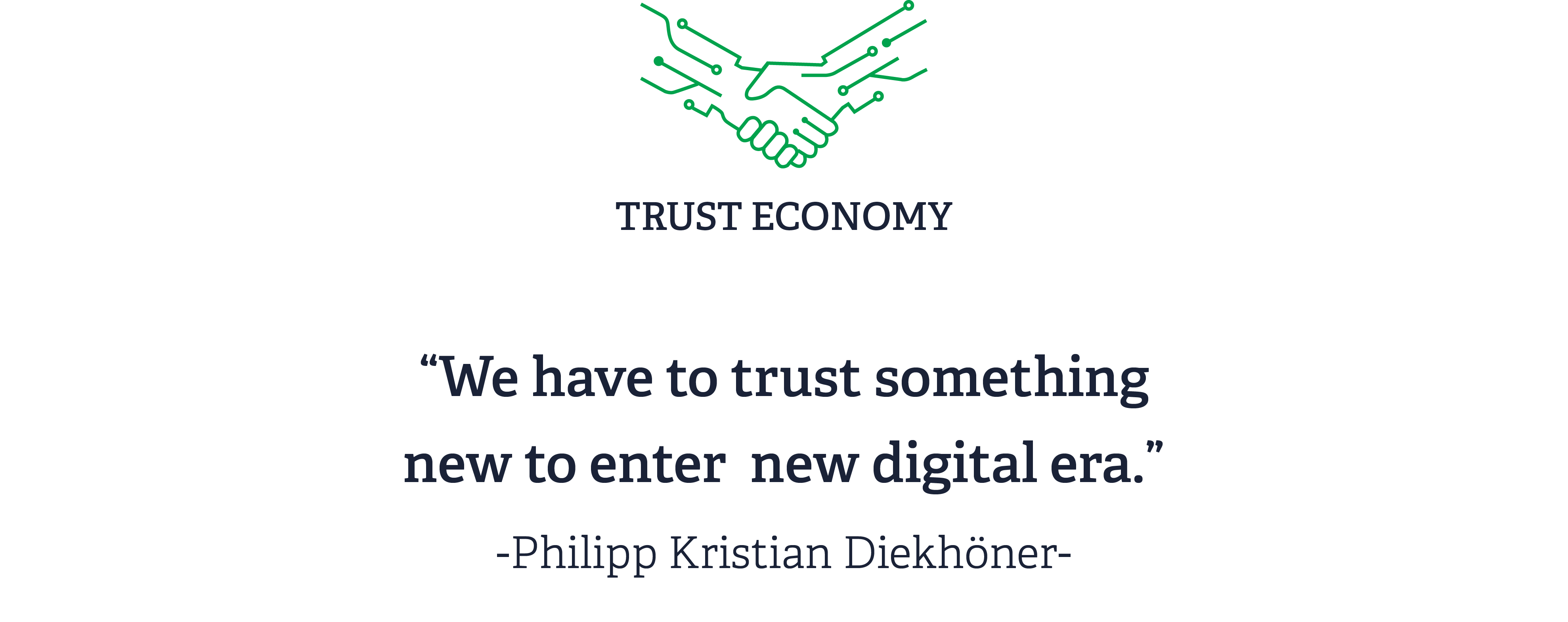
In the coming digital age such as Industry 4.0, trust will play a paradoxical role in the realm of innovation. It fulfils both the role of enabling and suppressing change. This becomes an important factor in determining how we develop our society. This upcoming phase is called Trust Economy. The question of trust in upcoming technologies is the biggest criterion to calculate the costs we will have to pay in and for the upcoming future, beyond whether or not we simply accept it as is.
Trust affects the outcome of speed and cost. Lower trust results in higher implementation time and economic verification costs. This, in turn, results in lower speed and higher costs, which is called ‘Trust Taxes’. On the other hand, high trust leads to shorter implementation times and cost of verification of the effects, thus improving speed and reducing costs. This creates a ‘Trust Dividend’. As a lack of trust and understanding in technology slows the application of technology, the monetary costs, as well as costs in terms of trust due to delays in the new digital era, will increase.
We are standing in front of the door to the future and new digital society is standing behind it. In addition, trust is the key to bring and create new values in the coming era of change. An open attitude towards technology is an essential factor for Trust Economy.
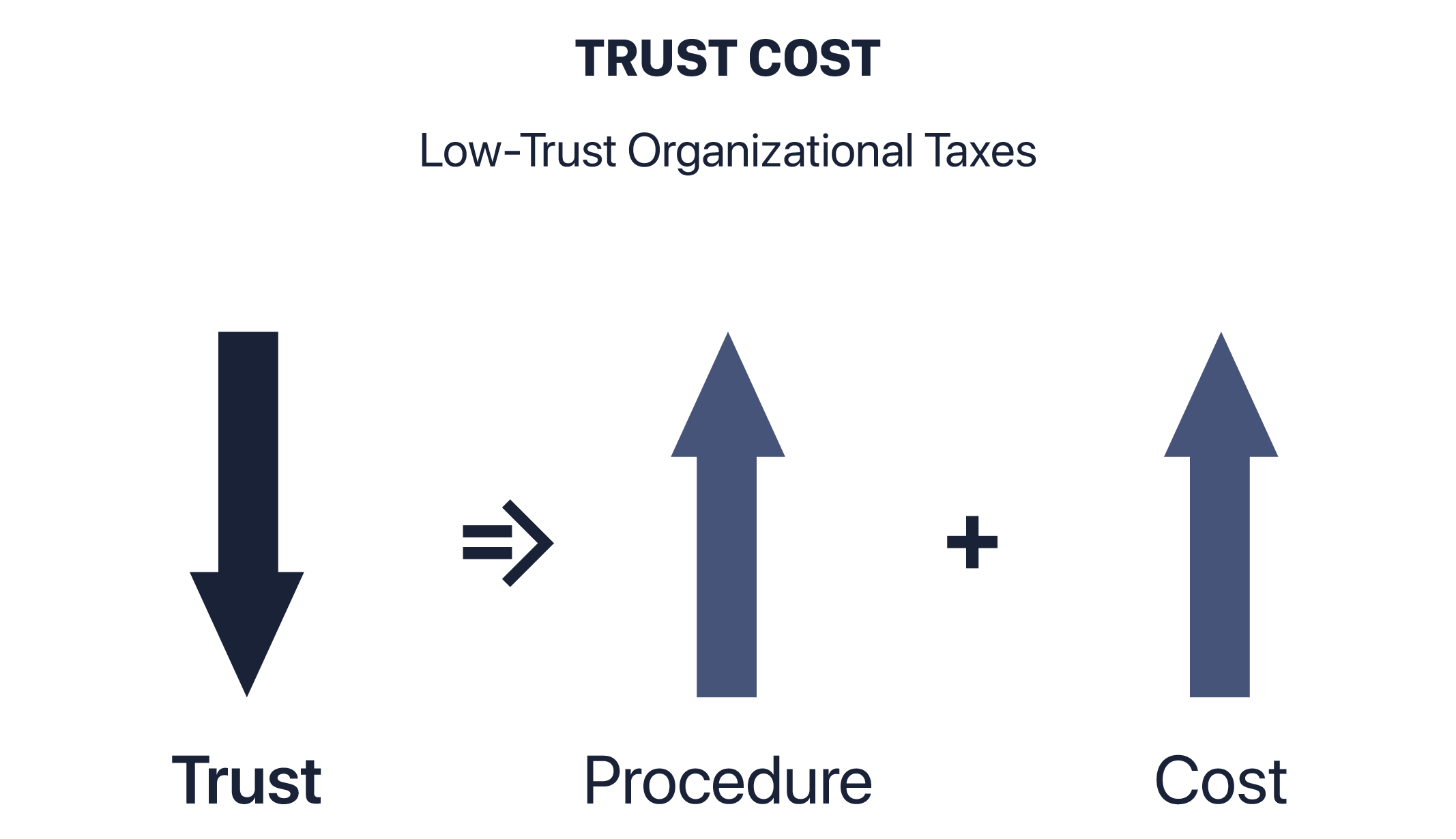
The views and criteria of trust in technology vary widely depending on user experience. Viewing things in a different way than the one we thought to be natural, deconstructing them, accepting new developments and rebuilding them is not a choice, but the only way to survive in the market.
As a result, the topics of persuading users and instilling trust into these new perspectives and standards will be an essential challenge for all professions and fields. A closer investigation should be conducted into elements providing confidence to users and the ones leading to a probable rejection and user refusal based on the lack of trust.
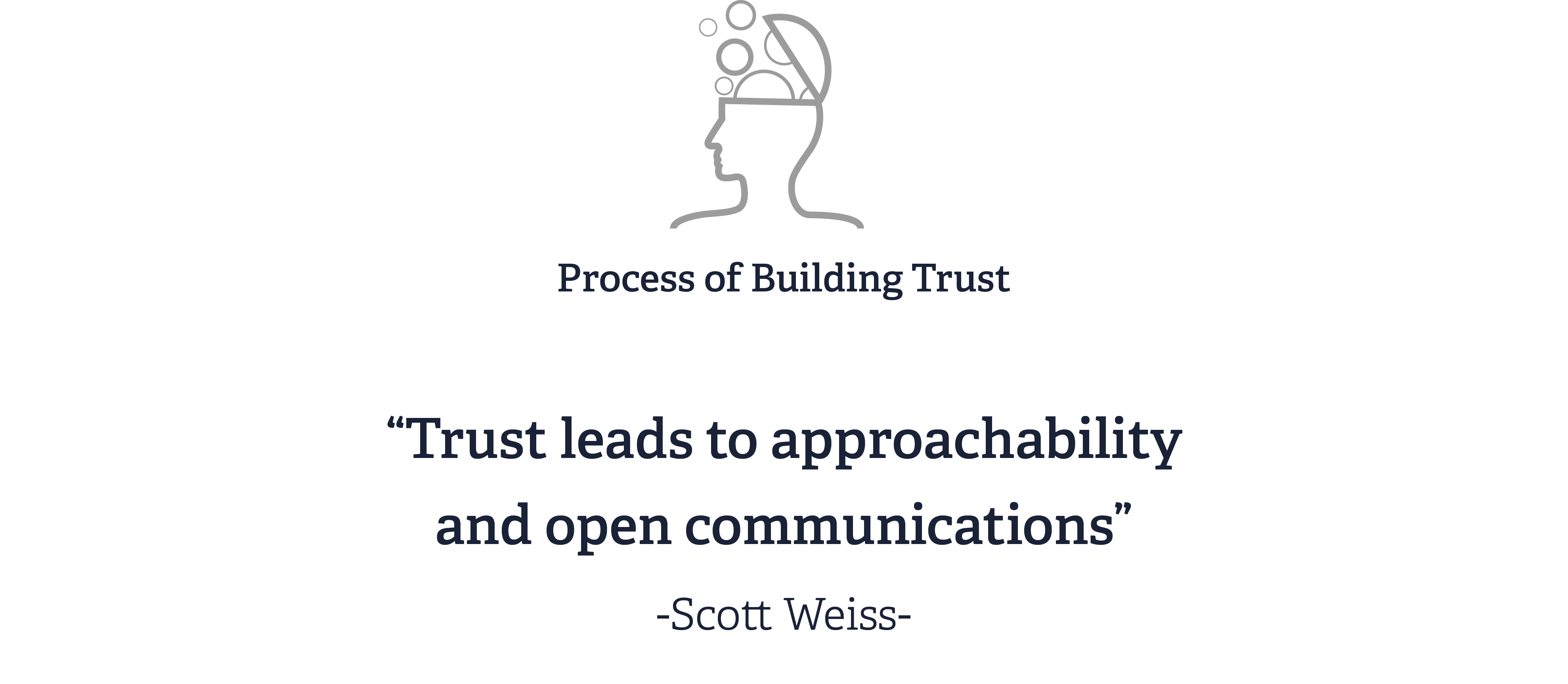
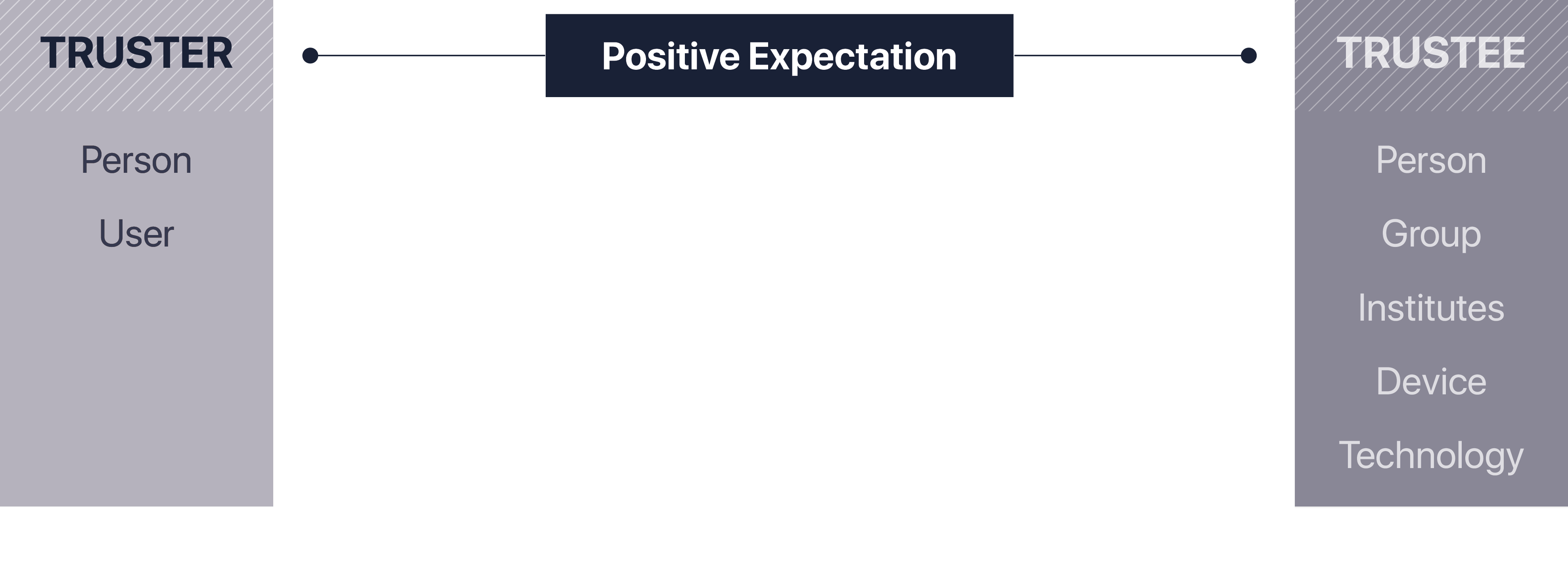
Expectation to Experience
Trust is made up of an emotional component but at the same time consists of rational judgment based on experience. Trust between people begins with positive expectations of other people’s behaviour. This expectation can apply to individuals, to more than one person (Larzelere and Huston, 1980), to institutional or organizational trust (Castelfranchi and Falcone, 2001) and to technical trust, technology itself or devices (Muir, 1987).
On the other hand, trust in technology is ‘the attitude that will help an (autonomous) agent achieve an individual’s goals in a situation characterized by uncertainty and vulnerability’ (Lee and See, 2004).
Trust in a technology reflects accepting the technology and provides a means to overcome a user’s vulnerability. Users must experience this process to craft a trust basis for the technology. Within the trust relationship between technology and users, positive expectation infers that users will be provided with a means to complement their vulnerabilities. This positive expectation must be derived as a result of a positive experience in order for users to generate hard evidence to trust the technology.
The positive expectation a user has in a technology and its performance, in summary, provides him with an opportunity to tackle and solve a problem he has been unable to solve previously. This positive expectation from the human perspective provides the user with extra benefits based on the solution supplied by the technology and it will allow the user to complete the experience; he must not be disappointed in order to create the first step in building trust between the technology and himself. If technology has a proper solution to a problem, sufficient and clear communication about the benefits and results needs to be the next step to the user. During this phase of perception, trust is built by the interaction process itself. This interaction-process must be sufficient to create trust between the user and technology. If the user has had a positive experience in both of these aspects (performance & perception), he is more likely to give a positive assessment of the product. This positive evaluation eventually leads the customer to continuously use it. A continuous relationship finally lets the user reach a stage of solid trust towards the product. Due to this reason, it will be important to provide an integrated positive user experience that takes both technical and human aspects into consideration.
Useful conclusions to establish trust in the digital era can be drawn and derived from a theory proposed by Fogg (2003) and dealing with the prominence-interpretation relationship between computers and users. This theory provides a framework to understand how different factors exert effects on user-computer interactions.

Two factors influence this trust-generation impact: These factors are defined as prominence and interpretation. Prominence refers to specific system elements that will be recognized by the user. Interpretation refers to the way users evaluate this particular system element in terms of trustworthiness.
Prominence x (times) Interpretation = Credibility Impact
As a result, in order for a user to find a technology credible and thus generate trust, recognizable components must be provided and the user must recognize and evaluate them. This means input and output processing is required between the technology and the user, just like the process of building trust between the individuals mentioned above.

Trust is not the final goal to be achieved; it is the interaction process itself. That is why we should approach this challenge from both sides. Which kind of features should be considered to tackle both the technologic and human aspect?
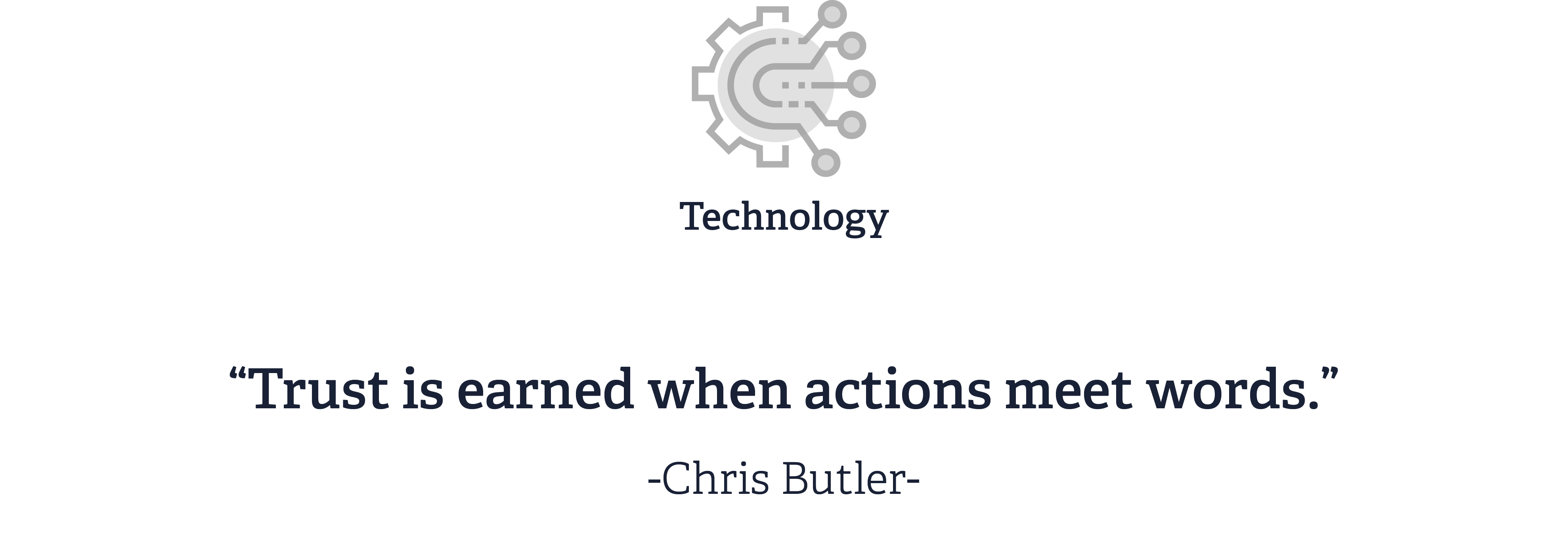
The most important reference point for users to embrace a technology is whether and what kind of values it provides. The most basic function to create these values promised by technology is to generate solutions to problems users are currently facing and to provide them with extra benefits that did not exist before. As such, in-depth analysis and subsequent delivery of the technology’s competences to users are of the essence. Possessing a competitive edge in the market will provide the most explicit and clear evidence for customer trust in a technology. These core-competences, as well as advantages compared to presently existing technologies, must be conveyed to users by analyzing their current problems in terms of social, economic or environmental impacts, converting them into the most appropriate form of the value proposition.
What kind of innovative experience elements can key technologies (Internet of Things [IoT] / Autonomous Driving/ Blockchain/ Artificial Intelligence [AI]) based upon and containing the powerful competence of automation that will drive Industry 4.0 provide and what value propositions are they able to deliver to users? The experience elements provided by these major technologies can be analyzed and classified into five major value propositions. Those are afterwards sorted into the two categories of ‘Pain Reliever’ or ‘Gain Creator’ which are presented in the value proposition canvas designed by Alex Osterwalder.
If a User Experience [UX] is being designed towards designated service features, it is possible and necessary to consider whether experience elements and value propositions acting as ‘Pain Relievers’ and ‘Gain Creators’ are adequately distributed within the solution to be provided to the user.
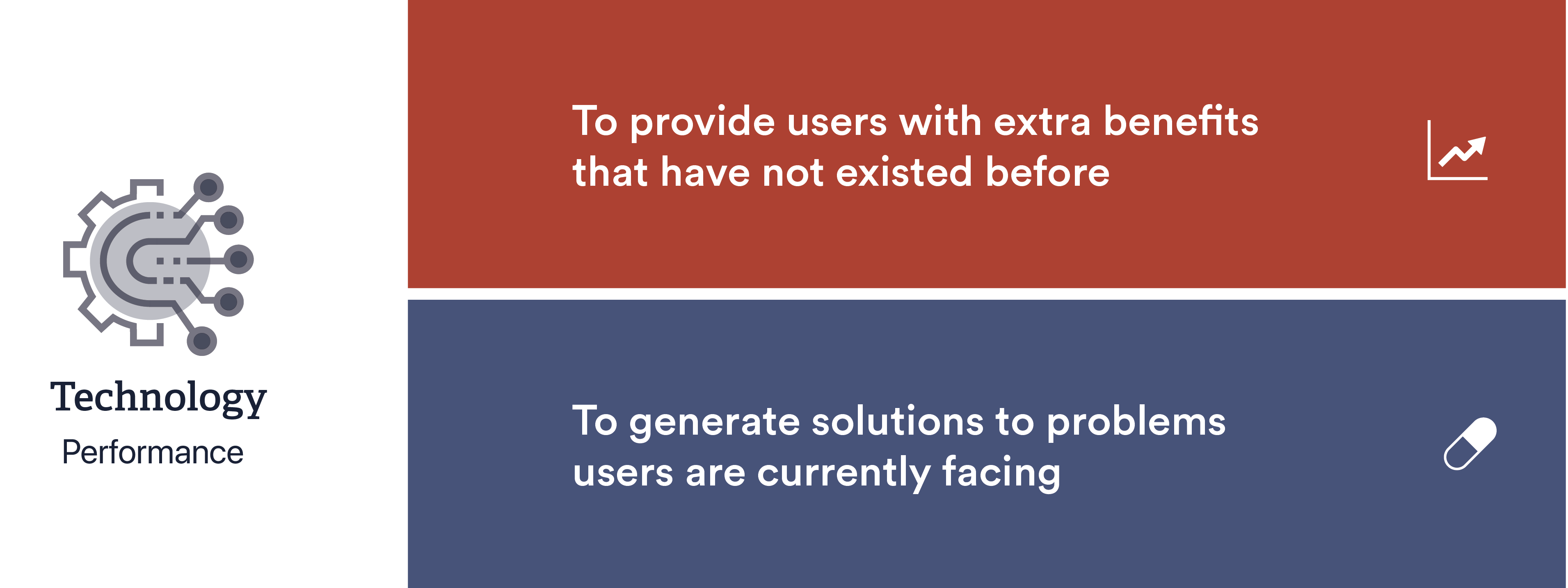
As Pain relievers
Advances in technology provide solutions that ameliorate users’ uncomfortable environments in the most immediate way – by directly improving them. The most difficult problems faced by users today, the ones that have led them to the most embarrassing or unpleasant situations, are the ones most directly addressed by the solutions provided by new technology to ensure that the user relies upon them. These value products persuade the user in a most rational way to accept the technology due to direct and obvious benefit.
Reliability (via Monitoring/Prevention/Security)
Technology places a high priority on eliminating the risk which users face or providing users with the opportunity to observe the situation at all times, thereby avoiding risks. This eliminates user anxiety and provides the highest safety value. These risks consist not only of physical elements posing a threat to the user but also of all the factors that can cause loss of any kind to the user while being on- and offline. The solution for reliability in Industry 4.0 is to provide users with access to information in the appropriate context at any time. This creates an unexpected, fail-free interaction between technology and users. ex) Transparent data trading through blockchain technology
Flexibility (via Connecting)
The development of the Internet created the World Wide Web, in which users are connected freely. During Industry 4.0, its borders are expected to expand even further. Meanwhile, the line between online and offline activities will be blurred through precisely tuned sensors and applications. By establishing hyper-connectivity in Industry 4.0, users are presented with unprecedented flexibility in life as most things on- and offline, virtual and real, become controllable without physical time and space restrictions. ex) Smart home devices
Efficiency (via Automation)
Productivity is generally defined as the ratio of output to input. Increasing this ratio is the origin of and the main purpose of technologic creation. A relatively large quantity of output produced using comparatively less input is defined as highly productive. Many experts believe that the productivity scale and speed of Industry 4.0are something we have never experienced before, because of the fully implemented concept of automation. Moreover, the productivity promised by Industry 4.0 is not only purely based on output to input ratio, but also stems from reliable decision making derived from the analysis of vast amounts of data. ex) Decentralization & Smart contract by Blockchain technology
As Gain Creators
The needs of users evolve over time without stopping. The advent of new technologies provides users with new and innovative experiences they were unable to imagine and experience beforehand, thus improving the quality of their lives to a new level. The value propositions provide the user with an amount of enjoyment originating from the use of the technology itself, far beyond any rational persuasion concept to accept the technology, and overwhelm them with emotions.
Comfortability (via Individualization)
Services are optimized for individuals based on personalized preferences through new technology and provide users with increased comfort. At present, methods are geared towards the mass production of small items. Due to productivity and price competitiveness, those methods will evolve into multi-product oriented ones which are aiming to satisfy individual tastes by personalization technologies. ex) 3D Printing production / Big Data & AI Marketing
Expandability (via Cooperation/Convergence)
Technology provides users with additional time and cost opportunities, enabling them to divert attention from the various tasks they have been given. The technology integrates and offers opportunities amongst other components to expand the limited choice and scope of life that was available to users previously. ex)Seamless Mobility as a Service / Autonomous driving
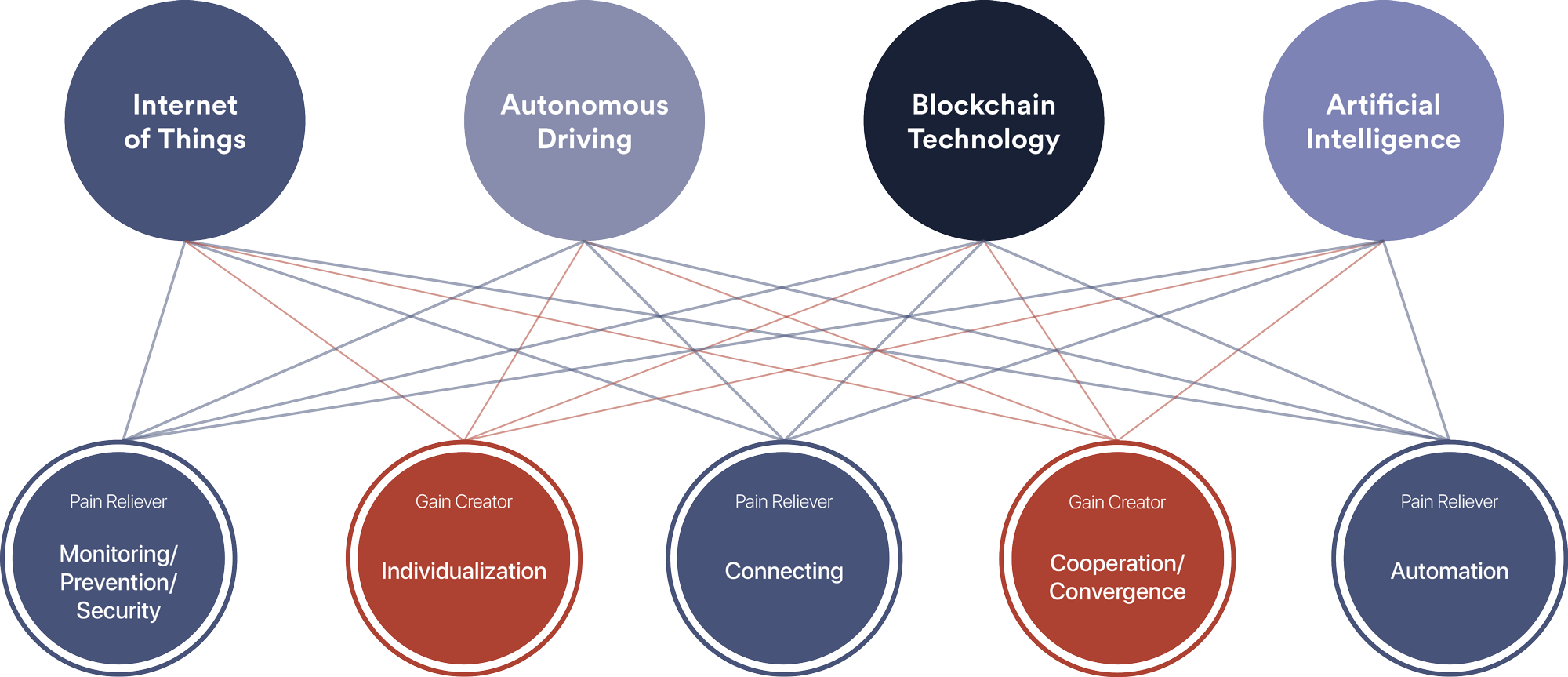

As technology advances, it will be important to design experiences that help user understanding. As far as trust and emotions are concerned, research suggests that the degree of familiarity between trustor and trustee affects the influence of incidental factors in trust. The more familiar the trustor feels with the trustee (well-known/ familiar/ acquaintances), the less impact incidental factors have on the trust relationship. In the UX context, the moment experience provided by the technology is recognized by the user as such - known experience, solid trust is established between the user and the technology.
In Industry 4.0 a strong trust relationship between user and technology which is unaffected by incidental components is critical; to ensure this establishment is a fundamental responsibility of UX design. As technologic competence evolves, it will be used to solve complex and unexpected situations as well as simple ones. The user on the other side needs to encounter a variety of solutions that change from time to time rather than one monotonous outcome offered by technology. In these situations, a strong bond between technology and the user plays an important role in preventing him from judging unexpected changes that occur occasionally as negative factors. For this reason, it is essential to determine how much information should be exposed to users in a way that they can clearly perceive and process it when designing UX.
In an environment surrounding users, a myriad of events happens simultaneously. If the system wants to communicate all those complex situations to the user in detail, he will be overwhelmed by the amount of information. In addition, if the user can not clearly recognize the information or if it is exposed in a complicated manner, he will interpret the information arbitrarily. Ultimately, this results in confusion between users and systems, which adversely affects trust.
In summary, there should be a continuous informative flow of communication between the user and the system. The key element is the importance to maintain transparency between the system/ technology and the user by reducing or eliminating complexity when designing the flow and processing of information to which the user is finally exposed.
To Well-known Experience
As technology advances, it will be important to design experiences that help a user to understand rather than purely impress. As far as trust and emotions are concerned, research suggests that the degree of familiarity between trustor and trustee affects the influence of incidental factors in trust. The more familiar the trustor feels towards the trustee (well-known/ familiar/ acquaintance), the less impact incidental factors have on the trust relationship. In a situation where relevant objective information needed for determining trust is missing, the trustor is solely governed by his own individual emotional state. However, in the opposite situation with relevant information sufficiently available, the impact of individual emotions is reduced and rational judgment is possible.
At the moment experience provided by the technology is recognized by the user as such - known experience, solid trust is established between the user and the technology in the context of UX. In Industry 4.0 a strong trust relationship between user and technology which is unaffected by incidental components is critical; to ensure this establishment is a fundamental responsibility of UX design. As technologic competence evolves, it will be used to solve complex and unexpected situations as well as simple ones. The user on the other side needs to encounter a variety of solutions that change from time to time rather than one monotonous outcome offered by technology. In these situations, a strong bond between technology and the user plays an important role in preventing him from judging unexpected changes that occur occasionally as negative factors. For this reason, it is essential to determine how much information should be exposed to users in a way that they can clearly perceive and process it when designing UX.
A myriad of events happens simultaneously in the environment surrounding users. If a system wants to communicate complex situations to the user in detail, he will be overwhelmed by the amount of information. In addition, if the user can not clearly recognize the information or if it is exposed in a complicated manner, he will interpret the information arbitrarily. Ultimately, this results in confusion between users and systems, which adversely affects trust.
In summary, there should be a continuous informative flow of communication between the user and the system. The key element is the importance to maintain transparency between the system/ technology and the user by reducing or eliminating complexity when designing the flow and processing of information to which the user is finally exposed.
What are the most essential processes and elements for users to understand information?
It is very important to consider methods of human information processing to be capable of conveying information to users in a clear manner. The human perception process is the process of selecting, organizing and interpreting information. The corresponding information components should be located and properly configured and placed that can support the perception process.
Designing Ergonomic information
Ergonomics does not describe human mechanization but a design process for human needs. Its purpose is to incorporate human behavior, abilities and limiting characteristics into designs to create tools, machines or environments that prove beneficial to humans, resulting in productivity, safety and effectiveness.
Applying this concept to the information process for the user translates into a necessity to design ergonomic information while taking into account human perception as a basic step. The goal is to ultimately guide the user to an advantageous experience.
Which UX design elements support the user’s perception process, enabling him to recognize an item of interest more clearly and easily?
Notification
The perceptual process is started with an informative input. Appropriate and timely feedback of the system is essential for users to understand its context. Only the cornerstones of the process should be accurately described and actually recognized in order for users to interact with the system continuously: Focusing on beginning, end and in certain cases eventually a brief break is sufficient. Especially feedback such as unexpected errors, changes, or cancellations originating from the UX design should be delivered in a clear fashion allowing the user to handle the situation while feeling in control at the same time.
Special attention must be paid to the way these notifications are delivered, as explicit or frequent exposure can be a burden to users and result in negative perception.
Organization( Deployment Structure of Information)
In addition to recognizing the information, users need to process and comprehend it. Categorizing and exposing information to users based on their circumstances and conditions helps them to simplify and understand the informative data efficiently. Although sometimes variable, this step is generally divided into three criteria.
The first criterion is time: When exposed to chronological work, the information is arranged in a timely and procedural sequence by the user. The second criterion is the arrangement of information according to priorities. Important information the user should permanently be aware of regardless of time and procedure is located in a visible and accessible spot to increase the frequency of information exposure. The last one is an overlay of the two aforementioned ones: the frequency of use may cause the customer to order information in structures of preference, enjoyment or personal need. Aiming to increase a user’s understanding of the three criteria means the two organizational scales of chronology and priority should take precedence; methods to present information should be selected accordingly. Each process does not have to be organized using only a single criterion. A user interface can be configured differently and combine several criterions at multiple points of the presentation.
Interpretation
A User needs to be given an accurate interpretation of how using the system can change his own situation, therefore ultimately enabling him to configure the system in accordance with his interests while at the same time disallowing him to discard essential information. The interpretation of information using appropriate methods provides users with an important rationale for making the best decision with the technology available at this very moment. Either benefits or disadvantages may occur as a result. Technology should also encourage users to follow the line of interpretation provided, meaning technology itself should motivate the user towards re-using it. Both a holistic and a fractional approach es can be used to make information accessible to the user, achieving this final goal of using the technology again.
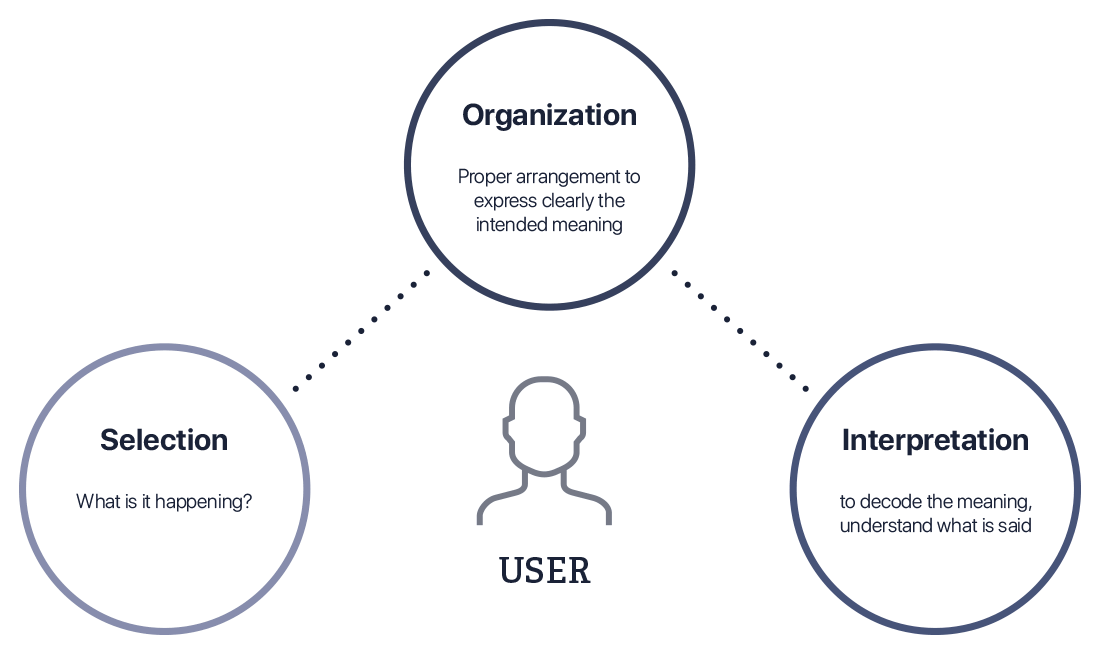
Holistic Approach (Preview/ Overview/ Review)
In the preview phase, users can predict the process; they confirm it at the overview stage and are forming a final opinion regarding beliefs, conviction and confidence during the review stage. This approach helps users to actively participate in and interpret the new technology. If an overall positive opinion is formed during the review stage, it might convince the user to use the design again.
The active use of a briefly visualized pre-, over- and review, focusing only on important points, reduces the barrier for users to understand the flow of information and process it with little effort.
Fractional approach (Comparison / Navigation)
A comparison provides information to the user, including incentives, by describing the benefits and losses that will occur once the system is used. This comparison provides the basis for a user to make transaction decisions at the current point in time by providing an accurate understanding of how much financial benefit he may receive. In addition, if a user is facing unexpected and complex situations such as system errors, changes, warnings or cancellations, he should be presented with a clear notification of the situation. In addition, the UX should also provide an accurate guide to navigate to solutions and ways to amend the situation.
As the preceding data shows, a user’s trust in technology will be the most important driving force of economic growth within Industry 4.0. Creating trust, however, is a very complex mechanism; it is hard to generate but easily lost.
My thesis mainly represents a macroscopic approach to this challenge. To optimize the process further, however, the microscopic sphere must also be taken into account, since trust also affected by personal and external factors. How to interact with users having different initial levels of trust in technology and how to develop various trust UX models for different areas are just two of the many additional challenges that need to be addressed in a more detailed fashion.
In addition, different types of trust in technology also need to be weighed and addressed before an ultimately negatively connotation is reached; examples include overambitious trust in advanced technology or mistrust due to incorrect interpretation. More research is needed regarding UX elements to avoid the aforementioned effects and to navigate, modify and channel trust in the relationship between users and technology.
The human and technical perspectives approached by the presented model below will have to be demonstrated as viable and updated through an iterative application.
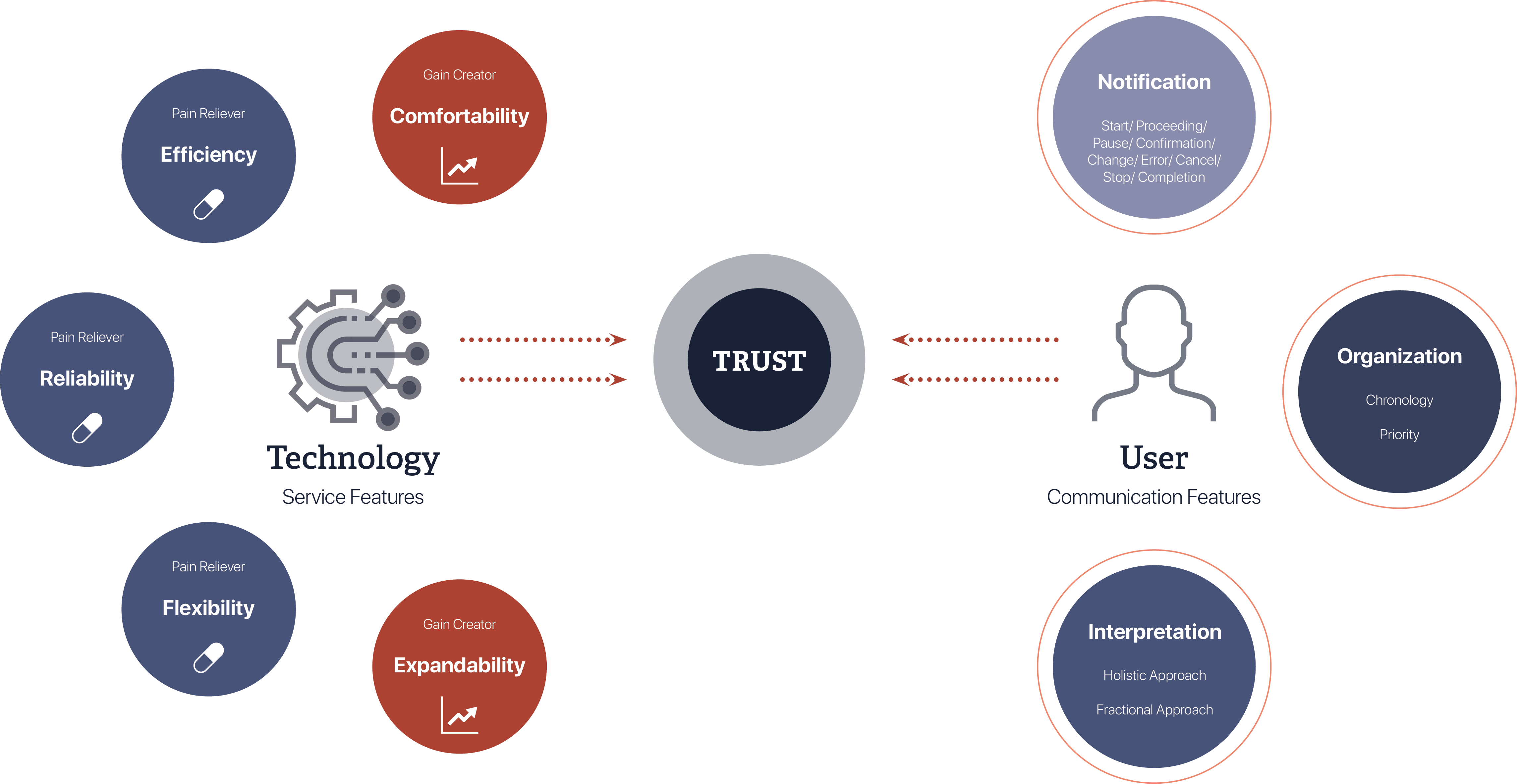
-Strategy for Designing Trust into UX-
More Projects

Autonomous AgentUX · UI

Designing Trust into UXUX / UI
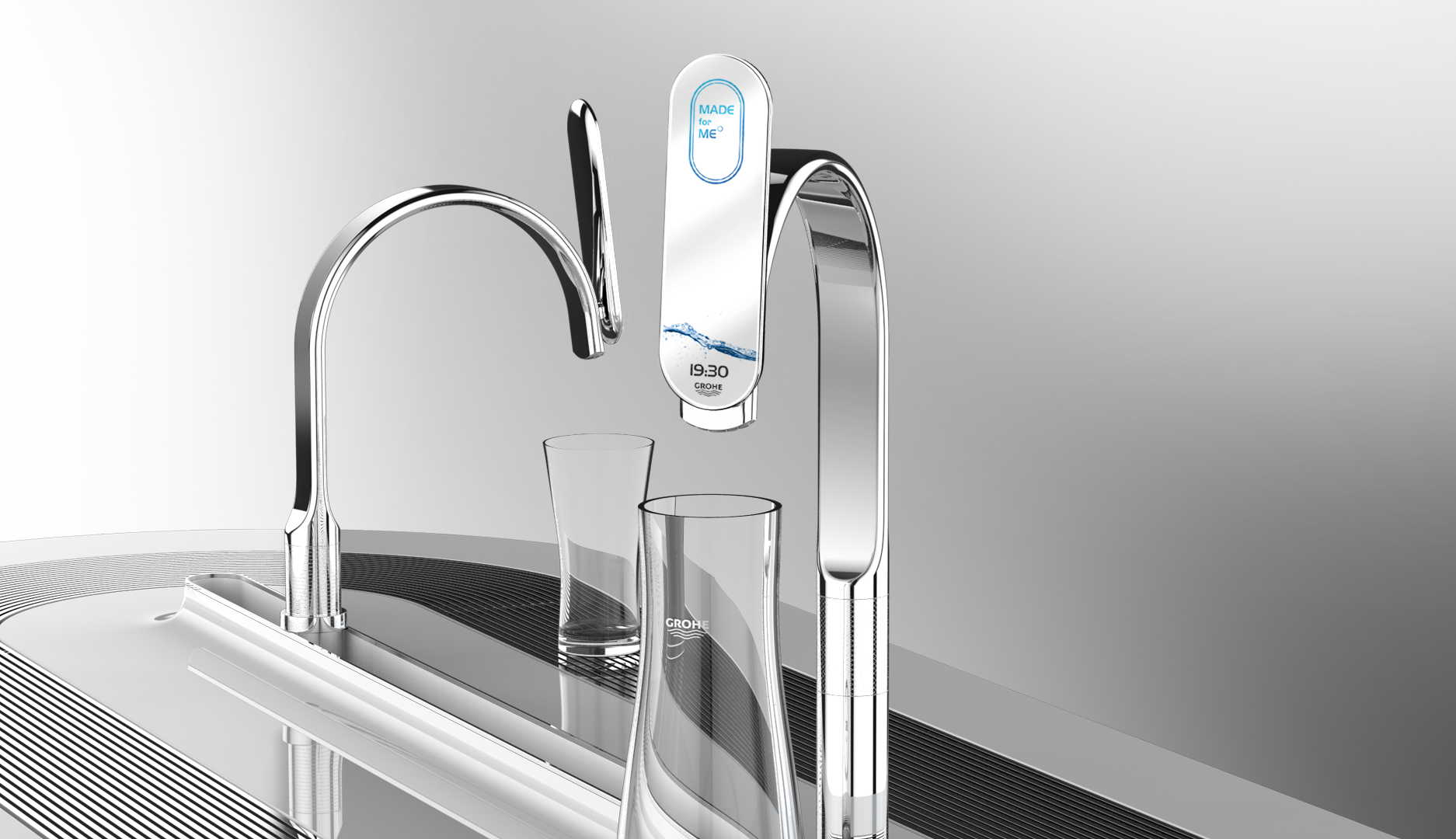
Made for MeUX / UI
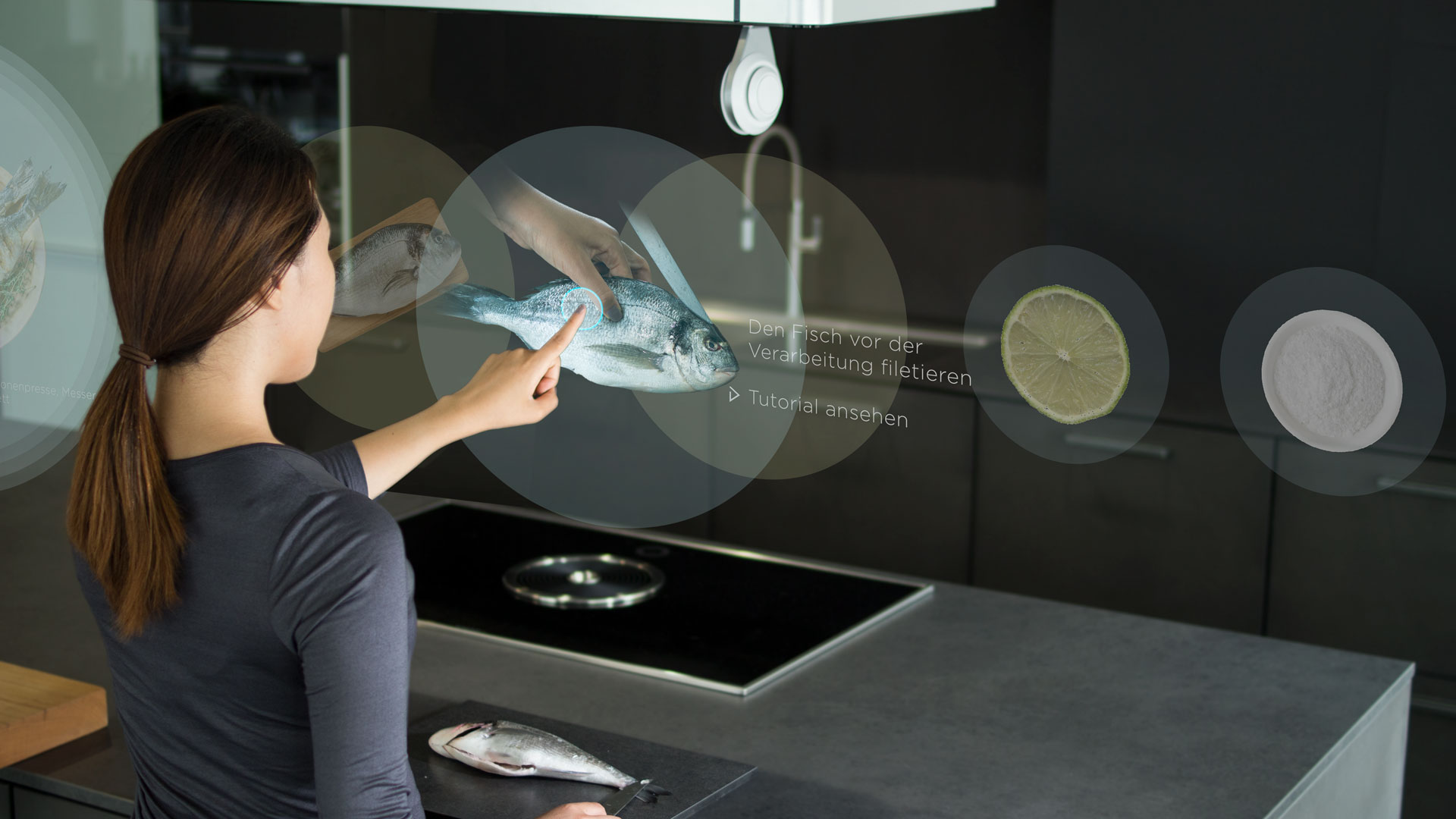
INCOUX / UI
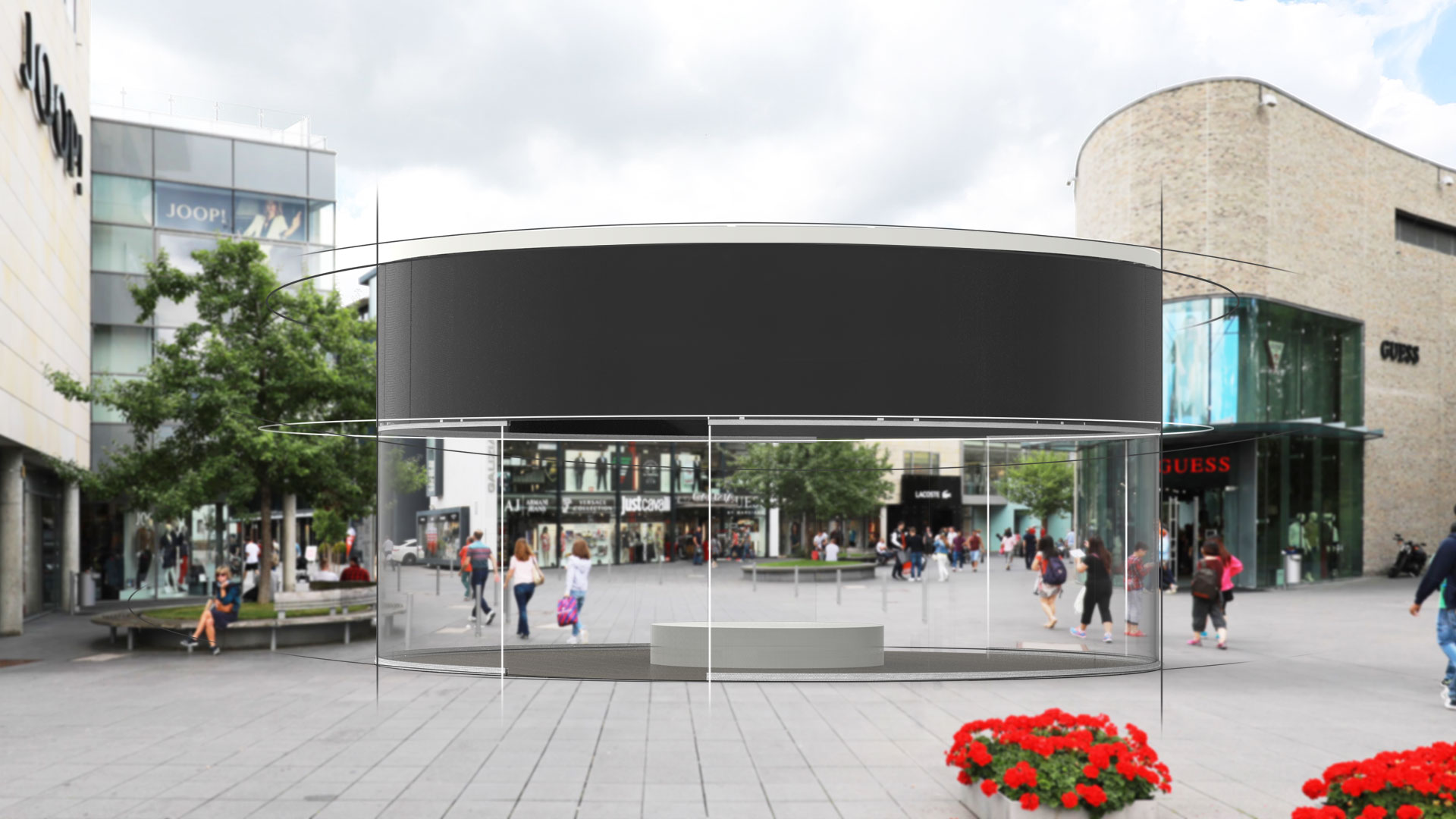
VotionProject type
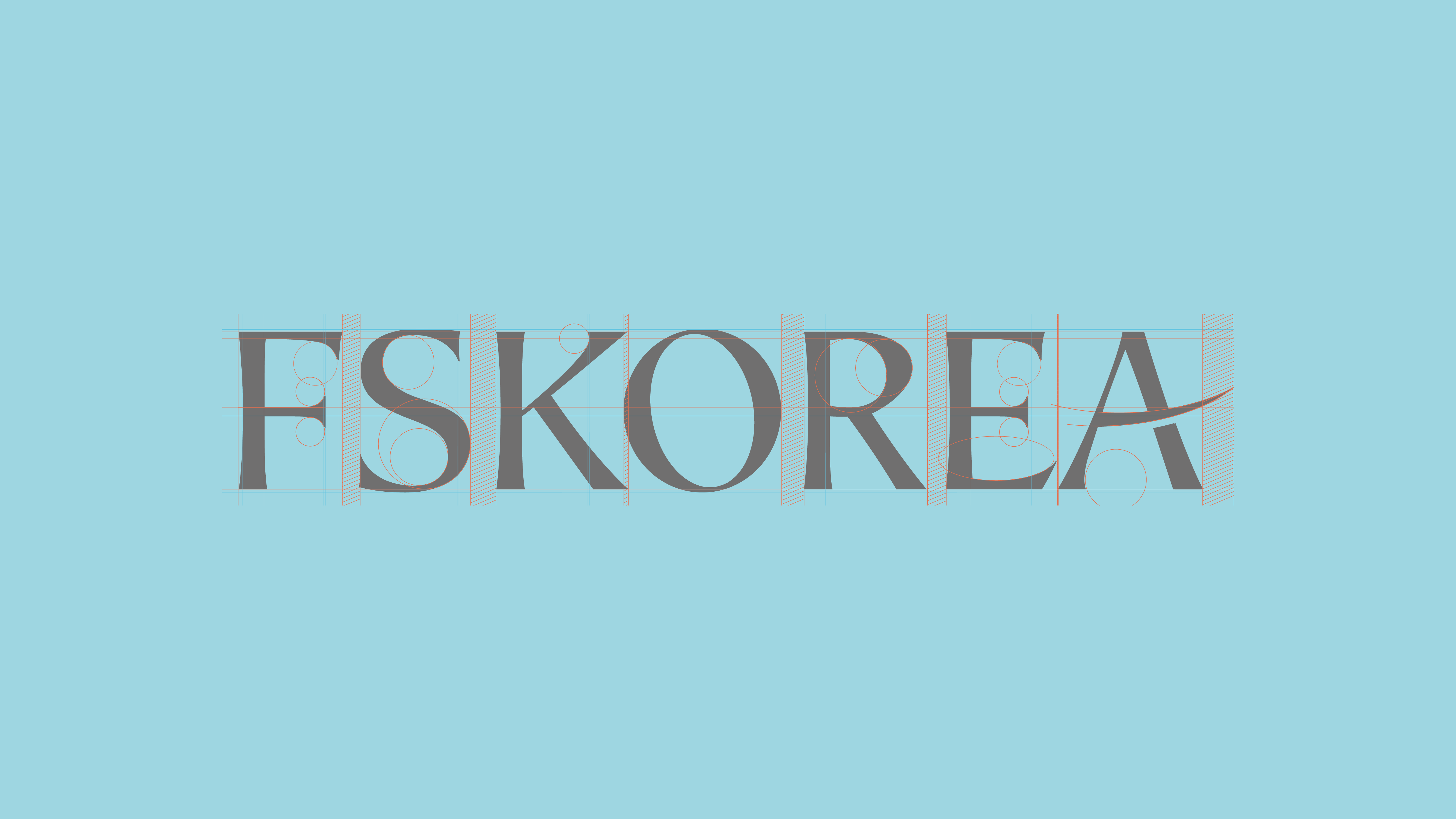
FSKOREAProject type

LiebherrUX / Product Design

